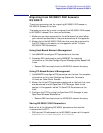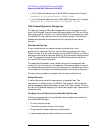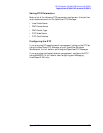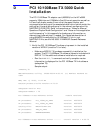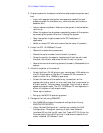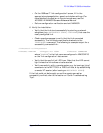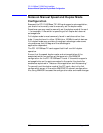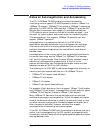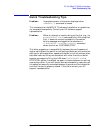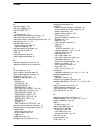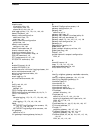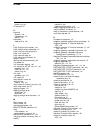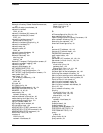
Appendix D 223
PCI 10/100Base-TX/3000 Quick Installation
Notes on Autonegotiation and Autosensing
Notes on Autonegotiation and Autosensing
The PCI 10/100Base-TX/3000 product provides the means for
interfacing various types of HP e3000 systems to either a 10Base-T or
100Base-TX network. 100Base-TX is a subset of 100Base-T networking
defined by the IEEE 802.3u-1995 standard. 100Base-TX provides 100
Mbits/s data transmission over category 5 unshielded twisted-pair
(UTP) cable for which two pairs of wires in the cable are used — one
wire pair for receiving data, and one wire pair for transmitting data.
The same card port that supports 100Base-TX operation can also
support 10Base-T operation.
Autonegotiation is a mechanism defined in the IEEE 802.3u
specification whereby devices sharing a link segment can exchange
information while the link is being established and automatically
configure themselves to operate at the most efficient mode shared
between them.
Autonegotiation is like a rotary switch that automatically switches to
the correct technology such as 10Base-T or 100Base-TX or between
half- and full-duplex modes. Once the most efficient common mode is
determined, autonegotiation passes control of the link to the
appropriate technology, sets the appropriate duplex mode, and then
becomes transparent until the link is broken.
The following is the IEEE 802.3u-defined autonegotiation hierarchy for
resolving multiple common abilities for a 10/100Base-TX card:
• 100Base-TX full-duplex (most efficient)
• 100Base-TX half-duplex
• 10Base-T full-duplex
• 10Base-T half-duplex (least efficient)
For example, if both devices on the link support 10Base-T (half-duplex)
and 100Base-TX (half-duplex), autonegotiation at both ends will select
100Base-TX (half-duplex) instead of 10Base-T (half-duplex).
Many 100Base-TX devices on the market today such as hubs and
switches do not support autonegotiation. Either the speed and duplex
mode of the device are fixed (as is usually the case with hubs), or they
are often manually configured at the desired speed and duplex (as is
often the case for switches). However, switches that support
autonegotiation are becoming more commonplace
If the PCI 10/100Base-TX/3000 card is connected to a device, such as a
switch, that is autonegotiating, the PCI card will autonegotiate with
the device to mutually determine the highest possible speed and duplex
settings between them.



